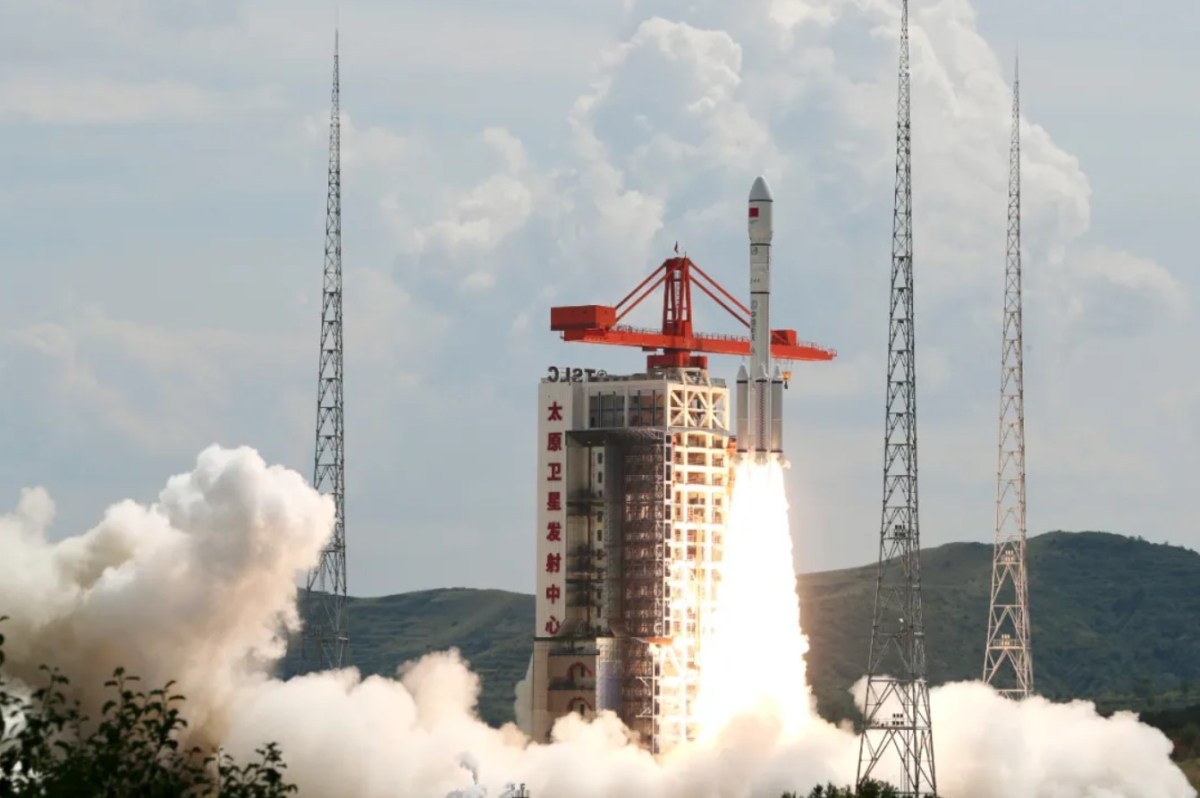HELSINKI — A Chinese Long March 6A rocket’s upper stage has fragmented into a cloud of over 700 pieces of space debris, adding to concerns about long-term orbital safety.
China launched the Long March 6A rocket Aug. 6 from Taiyuan spaceport carrying a first batch of 18 flat panel Qianfan (“Thousand Sails”) satellites to 800-kilometer-altitude polar orbit.
The rocket’s upper stage, having been modified for restarts to deploy multiple satellites, was then noted to have created a field of at least 50 pieces of debris Aug. 7 by Slingshot Aerospace, a space-tracking and data analytics firm.
It was initially unclear if this was a recurrent issue to passivation or insulation of the Long March 6A stage, or a breakup of the rocket body.
U.S. Space Command (USSPACECOM) confirmed Aug. 8 the incident to be a rocket breakup event. USSPACECOM said it was tracking over 300 pieces from this breakup event.
LeoLabs, a company which monitors low Earth orbit with a global network of radars, stated later Aug. 8 that its radar data indicates “at least 700 debris fragments and potentially more than 900.” The debris cloud is in-plane with the 18 deployed satellites.
🚨 We’re actively monitoring and analyzing the breakup event in #LEO involving a Chinese rocket body, CZ-6A. Our radar data indicates this event occurred on 6 August at ~20:10 UTC at ~810 km. It resulted in at least 700 debris fragments and potentially more than 900. pic.twitter.com/C3sGXxIwsR
— LeoLabs (@LeoLabs_Space) August 8, 2024
Space debris at such altitudes, where there is very little atmospheric drag, can remain in orbit for decades, depending on the size and density of the fragments and other variables.
The European Space Agency’s Space Debris Office estimates there have been more than 640 break-ups, explosions, collisions, or anomalous events resulting in fragmentation. It is also estimated there are 40,500 space debris objects greater than 10 cm, 1,100,000 from greater than 1 cm to 10 cm, and 130 million space debris objects from greater than 1 mm to 1 cm.
Long March 6A debris issues and rocket disposal
The Long March 6A was developed by the state-owned Shanghai Academy of Spaceflight Technology (SAST). It uses kerosene-liquid oxygen core stages with solid rocket boosters. The launcher can carry 4,500 kg to a 700-km sun-synchronous orbit.
The dry mass of the upper stage is approximately 5800 kilograms, according to NASA. The rocket has flown seven times in total, with its debut launch taking place in March 2022.
Neither SAST nor its parent company, the China Aerospace Science and Technology Corporation (CASC), nor the China National Space Administration (CNSA) have commented on the breakup of the rocket stage.
This is the second time the rocket’s upper stage has broken up in orbit. The first incident, in November 2022, saw the 18th Space Defense Squadron (18 SDS) identify and catalog 533 fragments by the end of January 2023. Other Long March 6A stages have created clouds of debris without breaking up.
The Shanghai Institute of Aerospace Systems Engineering in 2023 drafted “Detailed requirements for launch vehicle orbital stage disposal.” The guidelines intend, among other things, to reduce the chances of creating debris and avoid collisions. Standards include deorbiting spent stages where possible, guidelines to how long these remain in orbit, and passivation to avoid explosions. The standards were to be implemented Jan. 1, 2024.
The Aug. 6 launch was the first for a planned low Earth orbit communications megaconstellation known as G60, or Qianfan (“Thousand Sails”). Shanghai Spacecom Satellite Technology (SSST), the company behind the Qianfan constellation, plans to launch over 14,000 satellites. It remains uncertain how significant a role the Long March 6A will play in this project.
